PAHOA, Hawaii — The Latest on a volcanic eruption on the Big Island of Hawaii (all times local):
1:30 p.m.
Officials say 21 homes have now been destroyed in Hawaii by lava flowing from Kilauea volcano, based on an aerial survey by the fire department.
Residents of Leilani Estates are still being allowed to briefly return to gather medicines, pets and other essentials.
No children are allowed in the area.
Officials said molten rock, toxic gas and steam have been bursting through openings in the ground created by the volcano.
———
12:40 p.m.
A single mother of two says she is devastated that her Big Island home was burned to the ground by a lava flow.
Amber Makuakane confirmed to the AP on Sunday that her property in Leilani Estates is one of at least nine that officials say was destroyed by Kilauea volcano.
The 37-year-old elementary school teacher says her three-bedroom house was right across from a fissure that had opened Friday. She says there was some steam rising from all parts of the yard initially but everything looked fine.
But she received alerts Saturday that motion sensors throughout the house had been triggered. She later confirmed that lava had covered her entire property.
Makuakane grew up in the area, and despite the risks, wanted to remain close to her family.
———
10:55 a.m.
Officials on Hawaii’s Big Island say what started out as a small spattering of lava from the ground only took minutes to become cascading fountains.
U.S. Geological Survey volcanologist Wendy Stovall says lava fountains spewed as high as 230 feet (70 meters) into the air Saturday night only 15 minutes after the initial eruption from a new fissure.
Hawaii County spokeswoman Janet Snyder says only one fissure has active lava flowing, though at last count a total of nine vents had opened up as of 9:30 p.m.
Snyder says it’s all part of a little chain of events and that these “breakouts” are following a path.
She says the plan remains to allow some evacuated residents to return to Leilani Estates to retrieve important items, though that is subject to change.
———
9:25 a.m.
Officials in Hawaii now say nine homes have been destroyed by lava flowing from Kilauea volcano.
Big Island civil defense officials also said Sunday morning two new fissures, or vents where lava has broken through the ground, have emerged in the Leilani Estates subdivision.
That brings the total of fissures to 10 since the eruption began late Thursday afternoon, but a scientist with the U.S. Geological Survey says one of those vents has gone dormant.
Officials say active venting of lava and dangerous levels of volcanic gases continue between two main roads in the subdivision, where more than 1,700 people have been ordered to evacuate.
Officials say some residents will be allowed to complete evacuation of pets, get medicine and grab vital documents.
—-
Hawaii volcano destroys 9 homes, spews lava 200 feet in air
PAHOA, Hawaii — The number of homes destroyed by Hawaii’s Kilauea volcano climbed to nine Sunday as scientists reported lava spewing more than 200 feet (61 meters) into the air.
Some of the more than 1,700 people who evacuated prepared for the possibility they may not return for quite some time.
Hawaii officials said the decimated homes were in the Leilani Estates subdivision, where molten rock, toxic gas and steam have been bursting through openings in the ground created by the volcano. Black-and-orange ribbons of molten rock have curled onto roadways.
Amber Makuakane, 37, a teacher and single mother of two, said her three-bedroom house in Leilani Estates was destroyed by lava.
The dwelling was across from a fissure that opened Friday, when “there was some steam rising from all parts of the yard, but everything looked fine,” Makuakane said.
On Saturday morning, she received alerts from her security system that motion sensors throughout the house had been triggered. She later confirmed that lava had covered her property.
“They don’t really understand,” she said about her children. “My son keeps asking me, ‘Mommy when are we going to go home?’”
Makuakane grew up in the area and lived in her house for nine years. Her parents also live in Leilani Estates.
“The volcano and the lava — it’s always been a part of my life,” she said. “It’s devastating … but I’ve come to terms with it.”
There was no indication when the lave might stop or how far it might spread.
“There’s more magma in the system to be erupted. As long as that supply is there, the eruption will continue,” U.S. Geological Survey volcanologist Wendy Stovall said.
Traditional Hawaiian beliefs say it depends on Pele, the volcano goddess who is said to reside in Kilauea.
“You have to ask Pele,” Steve Clapper said when asked whether he had any idea when he’d return to his Leilani Estates home.
Clapper had to put his ailing 88-year-old mother into a car and leave shortly after hearing an ominous rumbling behind the house. He believes he saw its roof still standing in photos of the area but can’t be sure. Still, the California native was sanguine as he assessed his situation.
“What can you do? You have no control over it,” Clapper said as he started his day at a nearby evacuation shelter. “Pele’s the boss, you know?”
Cherie McArthur wondered what would become of her macadamia nut farm in Lanipuna Gardens, another evacuated neighborhood near Leilani Estates. One of the year’s first harvests had been planned for this weekend.
“If we lose our farm, we don’t know where we’re going to go. You lose your income and you lose your home at the same time,” said McArthur, who’s had the farm for about 20 years. “All you can do is pray and hope and try to get all the information you can.”
About 240 people and 90 pets spent Saturday night at shelters, the American Red Cross said.
Officials intended to let some residents return briefly Sunday to fetch pets, medicine and documents, though Hawaii County spokeswoman Janet Snyder cautioned that plans could shift with the rapidly changing situation.
The number of lava-venting fissures in the neighborhood grew overnight from eight to as many as 10, Stovall said, though some have quieted at various points. Regardless, USGS scientists expect fissures to keep spewing.
The openings could eventually consolidate into one powerful vent, as has happened in some previous Hawaii eruptions, Stovall said.
Kilauea (pronounced kill-ah-WAY’-ah), one of the world’s most active volcanoes, has been erupting continuously since 1983. The USGS’s Hawaiian Volcano Observatory issued a notice in mid-April that there were signs of pressure building in underground magma, and a new vent could form on the cone or along what’s known as the East Rift Zone. Leilani Estates sits along the zone .
The crater floor began to collapse Monday, triggering earthquakes and pushing lava into new underground chambers that carried it toward Leilani Estates and nearby communities. A magnitude-6.9 earthquake — Hawaii’s largest in more than 40 years — hit the area Friday.
It set Michael McGuire’s car rocking in his driveway, knocking things off his shelves and shattering glass in his cabinets in an area near Leilani Estates.
He hoped to check on his home Sunday. But he realized it was too soon to be sure when, or if, it would be safe from the moving lava.
“I’m somewhat fatalistic: if it happens, it happens,” he said. “And I’m enjoying life here, so you know, you put up with a lot of things here. This is one of them.”
Noah and Laura Dawn own a retreat center about 3 miles downhill from the most active vents They were clearing out items Sunday and relocating up the coast indefinitely.
“We’re just removing all things of value to us and precious things because I have the feeling it could get real – real, real fast,” Noah Dawn said.
———
Peltz reported from New York and Yan from Honolulu. Associated Press photographer Marco Garcia and videographer Haven Daley contributed to this report from Pahoa.
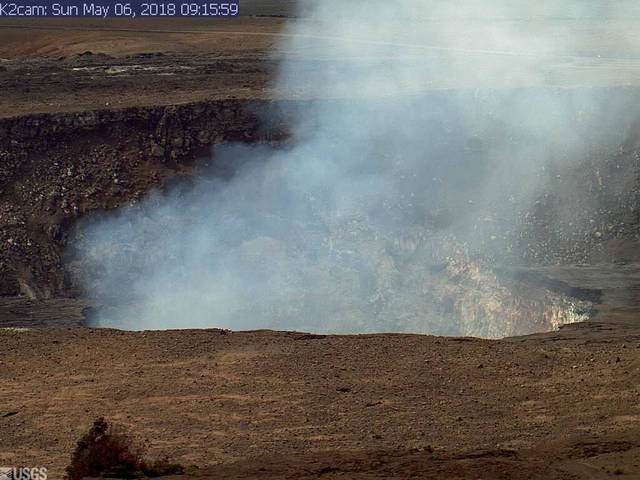
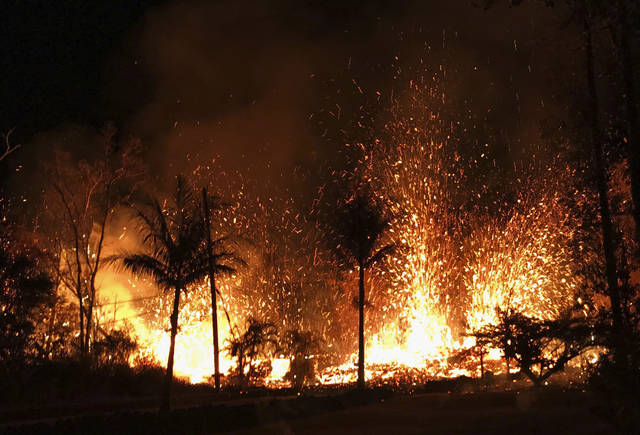
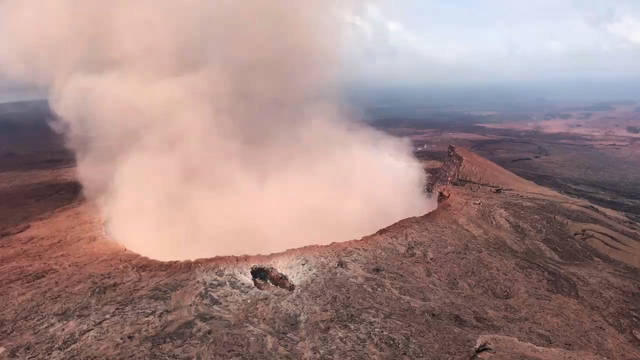
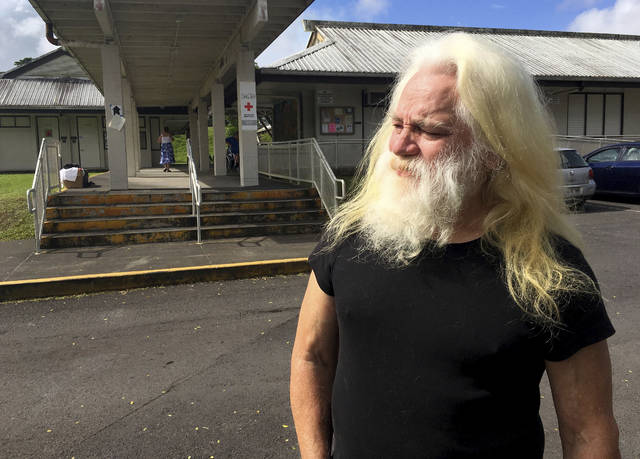
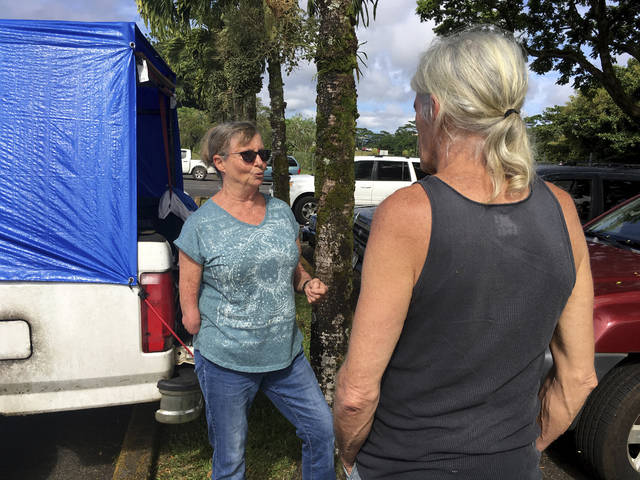
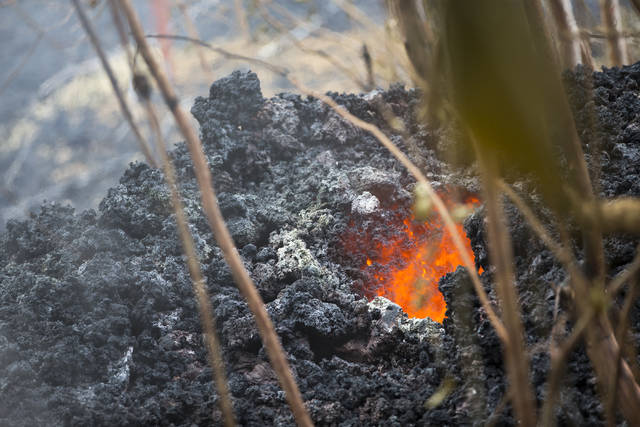






Why are there no restrictions on building communities above vents and chambers of an active volcano? It would seem the prudent thing to do. But then that would require a responsible government that considers the welfare of the people above the wishes of the developers.
There were attempts to divert lava flows successfully in areas like Iceland where water hoses were sprayed so that it harden and moved the flow toward bulldozed trenches that flowed into the sea. I think there was a attempt made in the 1940’s during an eruption at Hilo where the military bombed the flow.
Since the lava flows are so slow in moving, I don’t see why at least the County can not try to divert it by bulldozing trenches away from homes and spraying the overflow with fire hoses to harden and force the molten lava in a different direction. The landscape may look ugly, but at least homes will be saved
The whole island is a volcano. But only a small part is leaking with lava.